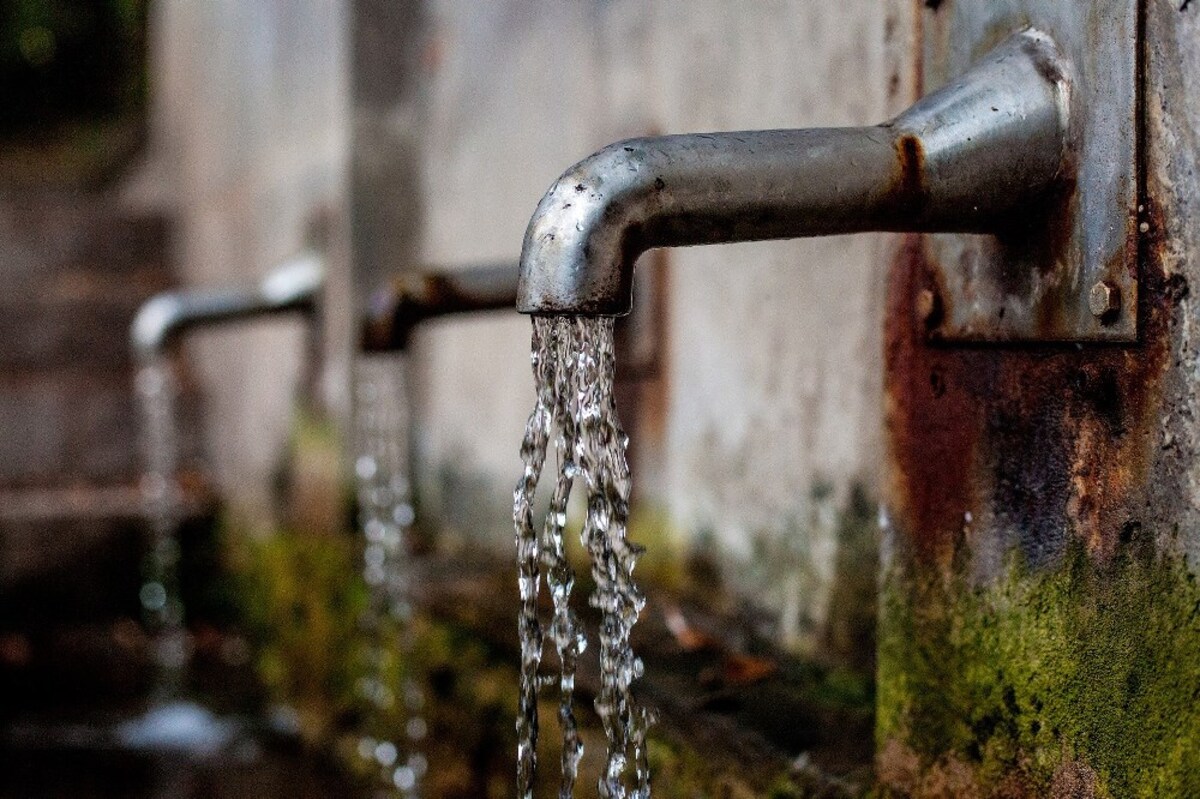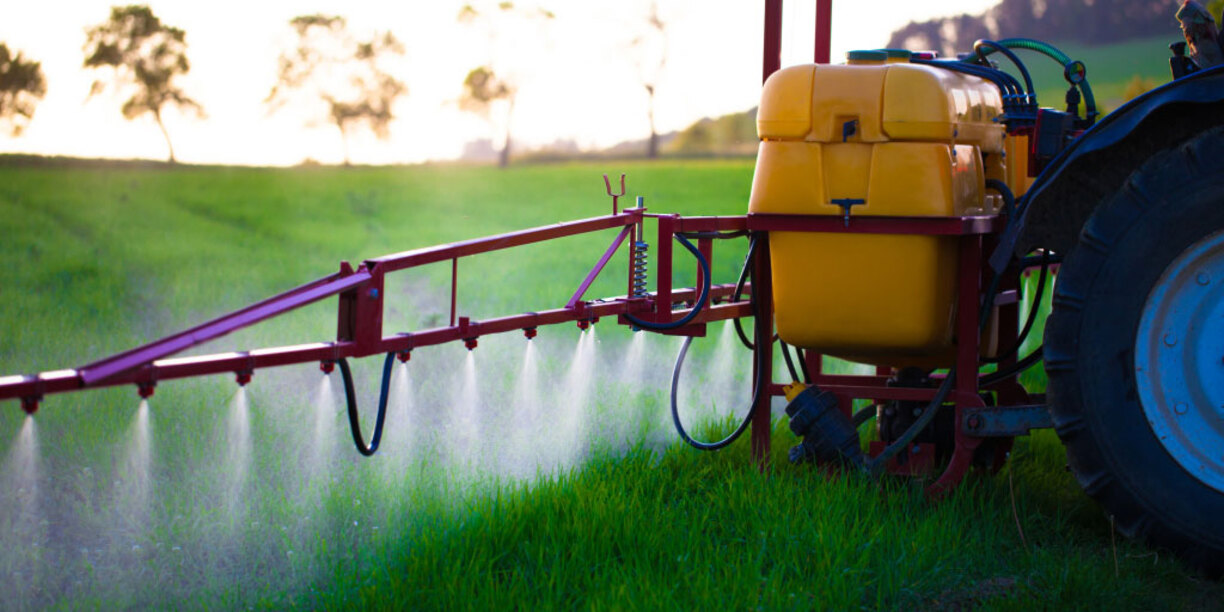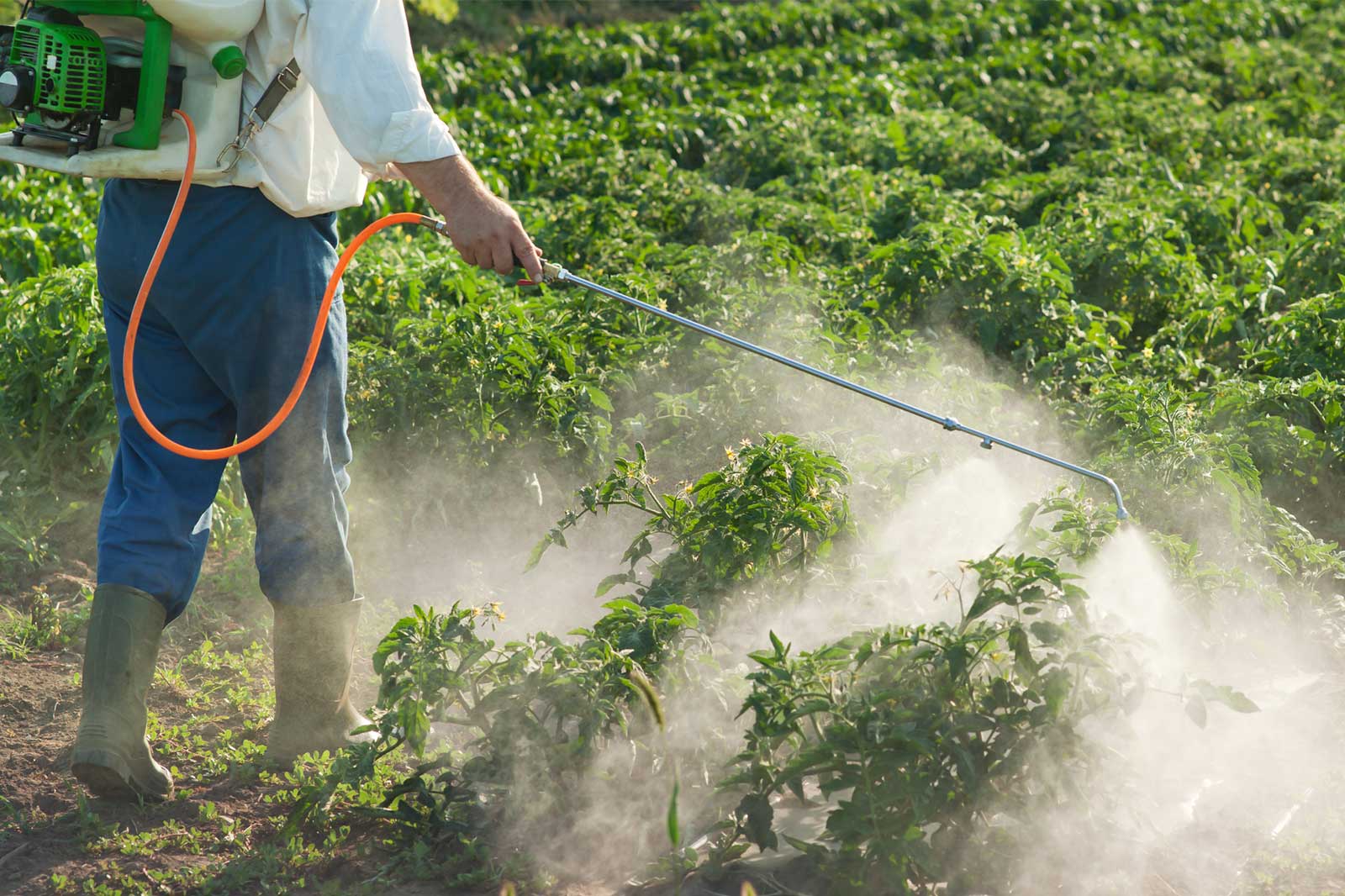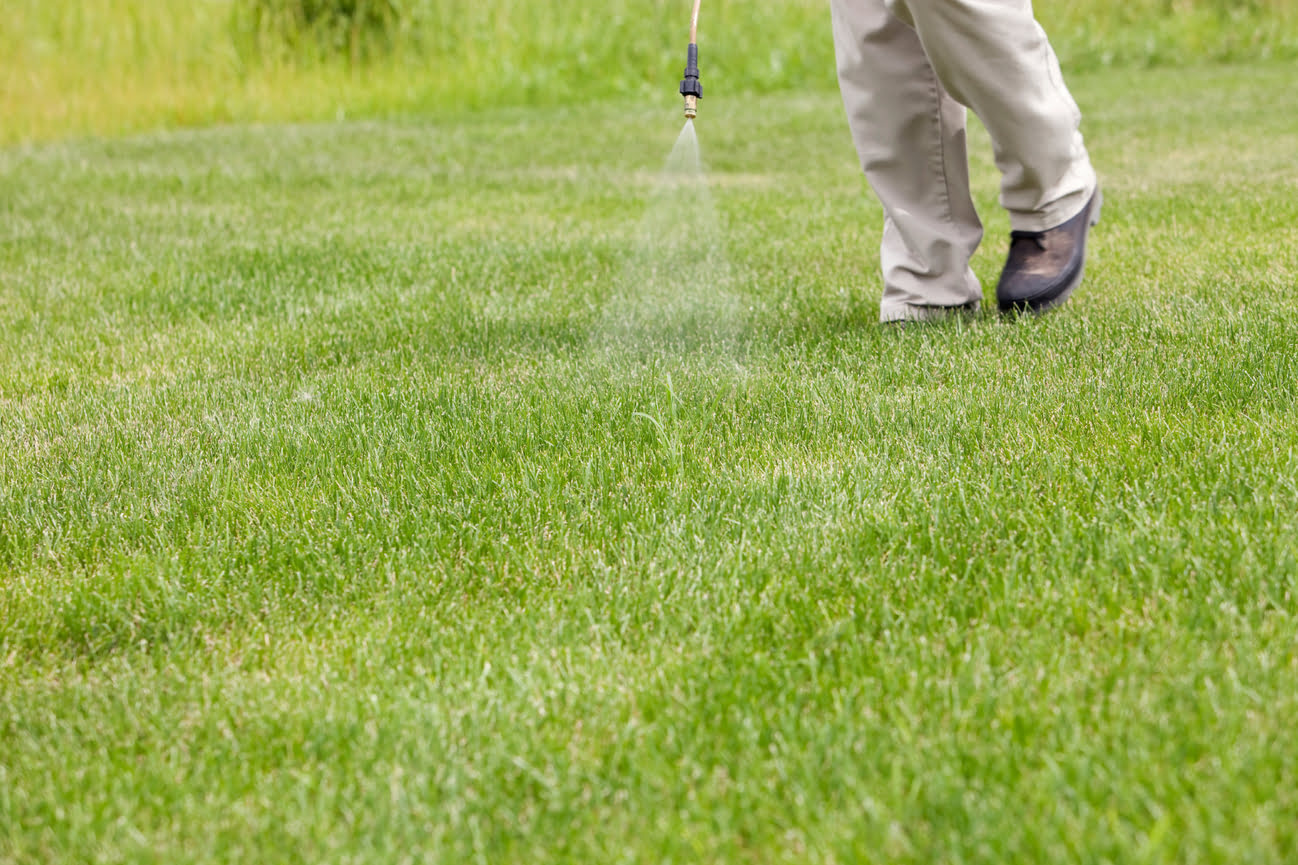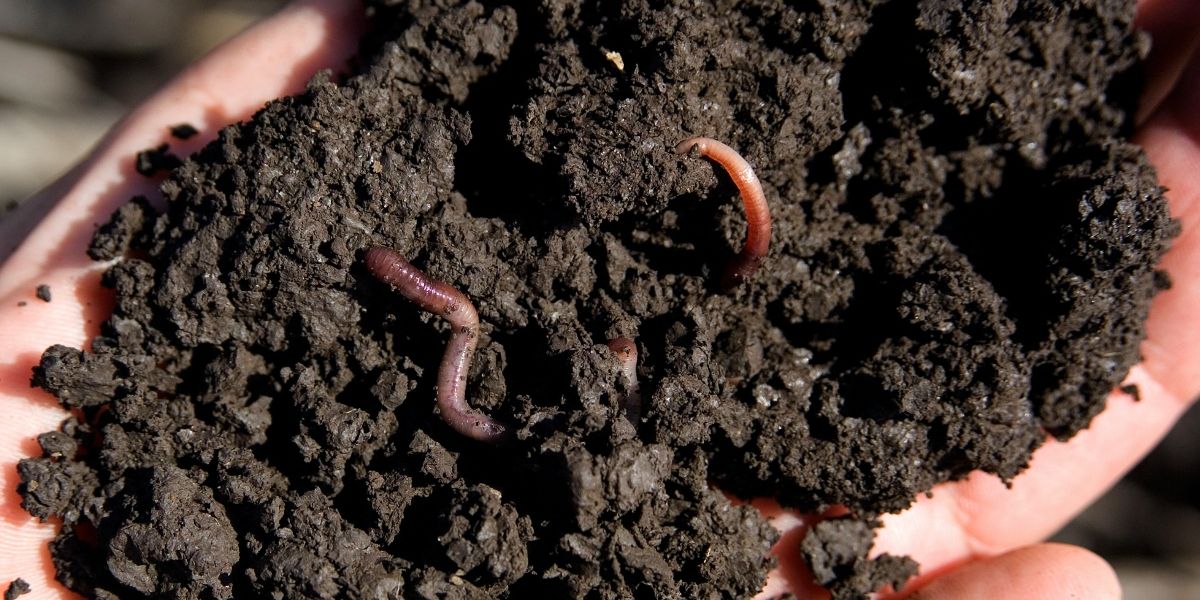Home>Gardening News and Trends>Latest News>How Do Pesticides Work


Latest News
How Do Pesticides Work
Modified: February 10, 2024
Discover the Latest News on How Pesticides Work and Stay Informed about the Science and Innovations in Pest Control. Keep Updated on the Latest Developments in Agricultural Practices and Environmental Impact.
(Many of the links in this article redirect to a specific reviewed product. Your purchase of these products through affiliate links helps to generate commission for Chicagolandgardening.com, at no extra cost. Learn more)
Table of Contents
Introduction
When it comes to dealing with pests and protecting crops, pesticides play a crucial role in modern agriculture. These chemicals are designed to control or eliminate pests that can cause significant damage to crops, reduce yields, and impact the economy. Pesticides are also used in residential areas to combat insects, rodents, and other pests that pose a threat to human health and property.
The purpose of pesticides goes beyond simply getting rid of pests. They help to ensure food security by preventing crop losses caused by pests and diseases. With the world’s population continuously growing, the use of pesticides has become essential to meet the global food demand.
There are different types of pesticides available, each with its own mode of action and target pests. Chemical pesticides, which are the most commonly used, employ synthetic chemicals to kill or repel pests. On the other hand, biological pesticides use naturally occurring substances, such as bacteria, viruses, and fungi, to control pests in an environmentally friendly manner.
Understanding how pesticides work is key to their effective use. Pesticides can kill pests upon contact, ingestion, or through systemic action. Contact pesticides act directly on the pest’s outer layer, while ingested pesticides are consumed by the pest and affect their internal systems. Systemic pesticides are absorbed by the plants and protect them from within, making them poisonous to pests that feed on them.
Several factors can affect the effectiveness of pesticides, such as the timing of application, dosage, and the pest’s resistance to the pesticide. It’s crucial to follow proper usage guidelines and stay updated on the latest research and developments to maximize the efficacy of these chemicals.
While pesticides are an essential tool in pest management, it’s also important to consider their environmental impact. Pesticide residues can persist in the environment, potentially polluting water sources and harming non-target organisms. As a result, integrated pest management strategies are increasingly being adopted, which combine the use of pesticides with other techniques to minimize environmental damage.
In this article, we will explore the fascinating world of pesticides, their different types, and how they work to control pests. We will also discuss the factors that influence their effectiveness and the importance of implementing sustainable pest management practices.
The Purpose of Pesticides
Pesticides serve a critical purpose in modern agriculture and pest management. Their primary goal is to control or eliminate pests that can cause significant damage to crops, livestock, and human health. By targeting and reducing pest populations, pesticides help to ensure food security, increase agricultural productivity, and protect public health.
One of the crucial roles of pesticides is to prevent crop losses caused by pests and diseases. Insects, fungi, weeds, and other pests can severely impact crop yields, leading to significant economic losses for farmers. Pesticides help farmers protect their crops from these destructive organisms, ensuring a stable and abundant food supply. This is especially important in regions where agricultural practices are vulnerable to pest infestations.
Pesticides are essential in controlling pests that transmit diseases. Mosquitoes, ticks, and other disease-carrying insects can spread pathogens that pose a significant risk to human health. By targeting and eliminating these pests, pesticides help reduce the spread of vector-borne diseases like malaria, dengue fever, and Lyme disease. This is crucial for protecting public health and preventing widespread outbreaks.
In addition to protecting crops and public health, pesticides also play a vital role in managing pests in residential and commercial settings. They are used to control insects, rodents, and other pests that can damage property, pose a health hazard, or cause nuisance. Pesticides used in these contexts help maintain a safe and hygienic environment for people to live and work in.
Furthermore, pesticides can also be used in veterinary medicine to treat and prevent infestations of parasites in livestock and pets. These parasites, such as fleas, ticks, and worms, can cause significant harm to animals, affecting their health, well-being, and productivity. Pesticides formulated specifically for use in animal health help protect livestock and companion animals from the detrimental effects of these pests.
Overall, the purpose of pesticides is to ensure the protection of crops, livestock, human health, and property from the harmful impact of pests. By effectively managing pest populations, pesticides contribute to a more sustainable and resilient agricultural system while safeguarding public welfare.
Types of Pesticides
There are various types of pesticides available, each designed to target specific pests and provide effective control measures. Understanding these different types can help farmers, gardeners, and pest control professionals choose the right pesticide for their specific needs. The main categories of pesticides include chemical pesticides and biological pesticides.
Chemical Pesticides: Chemical pesticides are the most commonly used type of pesticides. They are formulated using synthetic chemicals that effectively control pests by interfering with their biological processes. Chemical pesticides can be further classified into different groups based on their mode of action.
- Insecticides: Insecticides are used to control and eliminate insect pests such as aphids, caterpillars, and mosquitoes. They work by targeting the nervous system or other vital physiological functions of the insects.
- Fungicides: Fungicides are used to prevent and treat fungal infections in plants. They inhibit the growth and reproduction of various fungal pathogens, protecting plants from diseases like powdery mildew and leaf spot.
- Herbicides: Herbicides are specifically formulated to control unwanted plants, commonly known as weeds. They selectively target and kill weeds, allowing crops and desired plants to thrive without competition for resources.
- Rodenticides: Rodenticides are used to control rodents such as rats and mice. They are designed to attract and kill these pests effectively, preventing damage to structures, contamination of food, and transmission of diseases.
Biological Pesticides: Biological pesticides, also known as biopesticides, are derived from natural materials and organisms. They use living organisms, such as bacteria, viruses, fungi, or natural plant extracts, to control pests in an environmentally friendly manner. Biological pesticides are generally considered safer for humans, non-target organisms, and the environment.
- Bioinsecticides: Bioinsecticides are derived from naturally occurring substances, such as bacteria, viruses, and botanical extracts. They target and control a wide range of insect pests while leaving beneficial insects unharmed.
- Biological fungicides: Biological fungicides use naturally derived organisms or compounds to control fungal infections in plants. They can effectively prevent and treat diseases caused by various fungal pathogens.
- Bionematicides: Bionematicides are biopesticides that target nematodes, microscopic roundworms that can cause significant damage to crops. They help in managing nematode populations without harming other beneficial organisms.
It is essential to consider various factors such as pest type, target plant or animal, environmental impact, and efficacy when selecting the appropriate pesticide for a given situation. Integrated Pest Management (IPM) approaches often combine the use of chemical and biological pesticides with other pest management strategies to achieve effective and sustainable pest control.
Chemical Pesticides
Chemical pesticides are a widely utilized type of pesticide that uses synthetic chemicals to control pests. They play a significant role in modern agriculture and pest management by effectively targeting and eliminating pests that can cause damage to crops, livestock, and human health.
Chemical pesticides are classified into different groups based on their mode of action and target pests. Here are some common types of chemical pesticides:
- Insecticides: Insecticides are designed to control and eliminate insect pests that can damage crops and transmit diseases. They work by targeting the nervous system or other vital physiological functions of insects, effectively killing or repelling them.
- Fungicides: Fungicides are specifically formulated to protect plants from fungal infections. They inhibit the growth and reproduction of various fungal pathogens, preventing the occurrence and spread of plant diseases.
- Herbicides: Herbicides are primarily used to control unwanted plants, known as weeds. They selectively target and kill weeds without harming crops or desired plants. Herbicides help in maintaining the competitiveness of the desired plants and improving crop yields.
- Rodenticides: Rodenticides are used to control and eliminate rodents, such as rats and mice, that can cause damage to structures, contaminate food, and transmit diseases. They are designed to attract these pests and deliver lethal doses to effectively reduce their populations.
- Molluscicides: Molluscicides are pesticides used to control mollusks like slugs and snails, which can damage crops and ornamental plants. They are formulated to kill these pests, preventing feeding damage and reducing the risk of crop loss.
Chemical pesticides provide quick and efficient pest control, making them invaluable tools in agriculture and pest management. They can be applied using various methods, including spraying, dusting, or through seed treatments.
It is important to note that the use of chemical pesticides should be done responsibly and in accordance with the recommended guidelines. Appropriate protective measures should be taken to minimize exposure to humans, animals, and the environment. Additionally, it is essential to be aware of potential risks and to follow proper disposal methods for empty pesticide containers to prevent environmental contamination.
As with any chemical, there are concerns about the environmental impact of chemical pesticides, including their persistence in the soil and water sources. To address these concerns, regulations and guidelines are in place to ensure the safe and responsible use of chemical pesticides.
Integrated Pest Management (IPM) approaches often combine the use of chemical pesticides with other pest management strategies, such as biological control and cultural practices, to minimize pesticide usage and its environmental impact. By integrating various pest management techniques, the reliance on chemical pesticides can be reduced while still effectively controlling pests and ensuring sustainable agriculture.
Biological Pesticides
Biological pesticides, also known as biopesticides, are a type of pesticide that harnesses the power of naturally occurring substances and organisms to control pests. Unlike chemical pesticides, biological pesticides are derived from living organisms, such as bacteria, viruses, fungi, or natural plant extracts. They offer an environmentally friendly and sustainable alternative for pest management.
Here are some common types of biological pesticides:
- Bioinsecticides: Bioinsecticides use naturally occurring substances, such as bacteria, viruses, and botanical extracts, to control insect pests. They target specific pests without harming beneficial insects, helping to maintain a balanced ecosystem.
- Biological fungicides: Biological fungicides rely on naturally derived organisms or compounds to control fungal infections in plants. They can effectively prevent and treat diseases caused by various fungal pathogens, without leaving harmful residues.
- Bionematicides: Bionematicides are biopesticides designed to control nematodes, microscopic roundworms that can cause significant damage to crops. They work by targeting specific properties of nematodes, helping to manage their populations and protect plant health.
- Bioherbicides: Bioherbicides are biological pesticides used to control weeds. They utilize plant pathogens, such as fungi or bacteria, to inhibit weed growth and reproduction, providing an alternative to chemical herbicides.
Biological pesticides offer several advantages over chemical pesticides. Firstly, they are typically less harmful to humans, non-target organisms, and the environment. Biopesticides often have a specific mode of action, targeting only the intended pests, which reduces the risk of harming beneficial insects, wildlife, and pollinators.
Another benefit of biological pesticides is their ability to degrade more quickly in the environment. They usually have a shorter persistence compared to chemical pesticides, minimizing their impact on ecosystems and reducing potential residues in food and water sources.
Furthermore, the use of biological pesticides can help in managing pests while promoting sustainability and ecological balance. They can be a valuable tool in integrated pest management (IPM) programs, where multiple methods, including cultural practices and biological control, are combined to control pests effectively.
It is important to note that, similar to chemical pesticides, proper application and adherence to recommended guidelines are necessary for the effective use of biological pesticides. Understanding the lifecycle and behavior of target pests, as well as the specific requirements of the biopesticide, is critical to achieve optimum pest control.
Biological pesticides continue to be an area of research and development, as scientists explore new methods and organisms to enhance the efficacy of biopesticides. With increasing interest in sustainable agriculture and reducing chemical inputs, the use of biological pesticides is likely to continue growing as an important component of integrated pest management strategies.
How Pesticides Kill Pests
Pesticides, whether chemical or biological, are designed to eliminate or control pests that can cause damage to crops, livestock, and human health. Understanding how these pesticides work to kill pests is crucial for their effective use in pest management strategies.
Pesticides can kill pests through different mechanisms, depending on their mode of action. Here are some common ways in which pesticides eliminate pests:
- Contact Pesticides: Contact pesticides act directly on the pest’s outer layer, also known as the cuticle. When pests come into contact with these pesticides, they can penetrate the cuticle and disrupt vital physiological functions or cause physical damage, leading to the pest’s death. This mode of action is particularly effective against small insects and pests.
- Ingested Pesticides: Ingested pesticides are consumed by pests either through direct ingestion or by feeding on pesticide-treated plants or baits. These pesticides are designed to be toxic to the pests when ingested. They can affect the pest’s digestive system, nervous system, or other vital organs, ultimately leading to their demise.
- Systemic Pesticides: Systemic pesticides act through a different mechanism. Instead of directly targeting pests upon contact or ingestion, systemic pesticides are absorbed by the plants and transported throughout their tissues, including stems, leaves, and roots. Pests that feed on these plants ingest the pesticide, causing harmful effects to their physiological processes and leading to their death.
Pesticides, regardless of their mode of action, are formulated with specific active ingredients that are toxic to pests. These ingredients can vary depending on the type of pest being targeted and the specific pesticide being used.
Pesticides must be used judiciously and in accordance with recommended guidelines to maximize their efficacy and minimize potential risks. Proper timing, dosage, and application methods are key factors that influence the effectiveness of pesticides. It is essential to consider factors such as pest life cycle, population density, and susceptibility to the pesticide when determining the appropriate timing and frequency of pesticide application.
However, it is important to note that pests can develop resistance to pesticides over time. When a population of pests is exposed to the same pesticide repeatedly, some individuals may have natural variations in their genetic makeup that allow them to survive the pesticide’s effects. These resistant individuals can then pass on their genetic traits to future generations, leading to a diminished effectiveness of the pesticide. To mitigate this issue, it is recommended to implement integrated pest management (IPM) strategies, which combine the use of pesticides with other pest control methods to reduce dependence on any one chemical.
In summary, pesticides work by targeting pests through contact, ingestion, or systemic action. They disrupt vital physiological functions, cause physical damage, or interfere with the pest’s ability to reproduce, ultimately leading to their elimination. Proper and informed use of pesticides, along with other pest management strategies, can help mitigate pest damage and promote sustainable pest control in various agricultural and residential settings.
Contact Pesticides
Contact pesticides are a type of pesticide that acts directly on the outer layer, or cuticle, of pests. When pests come into contact with these pesticides, they can penetrate the cuticle and disrupt vital physiological functions, causing harm and ultimately leading to the pest’s death. The mode of action of contact pesticides is particularly effective against small insects and pests.
These pesticides work by either causing physical damage to the pest’s outer layer or by interfering with its internal processes. They can disrupt the pest’s nervous system, inhibit enzyme activity, or affect the balance of water and ions within its body.
One example of contact pesticides is the class of chemicals known as pyrethroids. Pyrethroids are synthetic chemicals derived from natural pyrethrins, which are extracted from chrysanthemum flowers. They are widely used to control a variety of insects, including mosquitoes, flies, and ants.
When pests come into contact with pyrethroids, these chemicals bind to the sodium channels in their nerve cells, leading to the rapid paralysis and death of the pests. Pyrethroids are particularly effective against flying insects due to their ability to quickly immobilize them in mid-air.
Another example of contact pesticides are the organophosphates. Organophosphates are a group of synthetic chemicals that inhibit the activity of an enzyme called acetylcholinesterase, which is essential for normal nerve function in pests. Without functional acetylcholinesterase, the pests’ nervous system becomes overstimulated, leading to paralysis and death.
Contact pesticides can be applied in various forms, including sprays, powders, or dusts. These formulations allow for targeted application to specific areas or direct treatment of pests upon contact. They are commonly used in agricultural settings to control pests that infest crops, such as aphids, mites, and caterpillars.
It is important to note that while contact pesticides are effective in controlling pests upon direct contact, they may have limited residual activity. This means that their effectiveness may diminish over time, as the pesticide is washed away by rain or degraded by sunlight and microbial activity. As a result, repeated applications or the integration of other pest management strategies may be necessary to ensure continued control.
Proper usage and adherence to safety guidelines are essential when using contact pesticides. It is crucial to wear protective gear, follow recommended application rates, and avoid direct exposure to humans, animals, and non-target organisms. Using contact pesticides in conjunction with other pest management methods, such as cultural practices and biological control, can enhance the effectiveness of pest control while minimizing environmental impact.
Overall, contact pesticides play a vital role in pest management by targeting pests directly upon contact. Their ability to disrupt the physical and physiological processes of pests makes them effective tools in controlling small insects and pests that can cause damage to plants, human health, and property.
Ingested Pesticides
Ingested pesticides are a type of pesticide that is consumed by pests either through direct ingestion or by feeding on pesticide-treated plants or baits. These pesticides are specifically designed to be toxic to the pests when ingested, targeting their internal systems and ultimately leading to their death.
When pests consume ingested pesticides, the toxic compounds in the pesticide interfere with their physiological processes, causing harm or inhibiting vital functions. The specific mode of action can vary depending on the pesticide and the pest being targeted.
One common type of ingested pesticide is the class known as stomach toxins. These pesticides are typically ingested by pests when they feed on treated plants or other food sources. Inside the pest’s body, the pesticide disrupts the function of enzymes or blocks specific receptor sites, leading to the pest’s paralysis, starvation, or death.
Baits are another form of ingested pesticide. These baits are formulated to attract pests, enticing them to consume the pesticide along with the bait. Baits are commonly used to control pests like ants, cockroaches, and rodents. The toxic component in the bait acts upon ingestion, affecting the pest’s nervous system, digestive system, or vital organs, causing their demise.
One example of ingested pesticides is the class of chemicals known as anticoagulants, commonly used to control rodents. Anticoagulants interfere with the blood clotting mechanism in rodents, causing internal bleeding and eventually leading to their death. These pesticides are slow-acting, allowing the rodents to consume them multiple times before succumbing to the effects. This feature aids in minimizing bait shyness and allows the pesticide to be spread among the rodent population.
Ingested pesticides can be delivered in different formulations, including granules, pellets, or liquid baits. These formulations provide an attractive food source for the pests and ensure efficient delivery of the toxic compound into their systems.
It is important to consider certain factors when using ingested pesticides. The timing and placement of baits or treated plants are critical to ensure that pests come into contact with the pesticide. Care must be taken to keep these pesticides out of reach of non-target organisms, including humans and pets, to prevent accidental ingestion. Follow proper safety measures and consider bait rotation strategies to minimize the development of resistance in target pests.
Integrated Pest Management (IPM) approaches often incorporate the use of ingested pesticides along with other pest control strategies. By combining multiple techniques, such as cultural practices, biological control, and targeted pesticide applications, pest populations can be effectively managed while reducing the reliance on any one method.
In summary, ingested pesticides play a vital role in pest management by targeting pests through consumption. They disrupt the internal systems and vital functions of pests, ultimately leading to their demise. Proper usage, adherence to safety guidelines, and integration with other pest management strategies are important considerations to ensure effective and sustainable pest control.
Systemic Pesticides
Systemic pesticides are a type of pesticide that is absorbed by plants and transported throughout their tissues. These pesticides provide a unique mode of action by making the entire plant toxic to pests that feed on it. Unlike contact or ingested pesticides, systemic pesticides offer internal protection, rendering the plant itself poisonous to pests.
When systemic pesticides are applied to the soil, sprayed onto plants, or applied as seed treatments, they are taken up by the plant’s roots, leaves, or other tissues, and then translocated throughout the plant via the vascular system. As a result, pests that consume any part of the plant, including the leaves, stems, or sap, will ingest the pesticide.
The systemic pesticide then affects the pest’s internal systems, typically targeting vital physiological processes, such as enzyme activities or reproduction, leading to the pest’s demise. Since the pesticide is distributed within the plant’s tissues, pests that feed on various parts of the plant can be affected, providing comprehensive pest control.
There are several advantages to using systemic pesticides. First, they can provide long-lasting protection against pests as the pesticide remains active within the plant tissues for an extended period. This is particularly beneficial in controlling pests that have a prolonged feeding period or pests that have not emerged at the time of pesticide application.
Second, systemic pesticides are less susceptible to degradation by environmental factors, such as rain or sunlight, as they are protected within the plant’s tissues. This allows for more consistent and reliable control of pests compared to contact or ingested pesticides.
One commonly used group of systemic pesticides is the neonicotinoids, which are widely used to control various insect pests. Neonicotinoids work by binding to specific receptors in the insect’s nervous system, interfering with their normal nerve function. This disruption leads to paralysis, disorientation, and eventual death of the pest.
It is important to note that systemic pesticides can impact non-target organisms that come into contact with the treated plants, including beneficial insects, pollinators, and wildlife. Therefore, it is crucial to apply systemic pesticides responsibly and with consideration for their potential effects on the surrounding ecosystem.
Systemic pesticides have become widely used in agriculture due to their convenience and effectiveness. However, there is a growing concern about their potential environmental impact and the residues they may leave in plant-derived products. This has led to regulatory scrutiny and efforts to develop alternative pest control methods that minimize reliance on systemic pesticides.
Integrated Pest Management (IPM) strategies often combine the use of systemic pesticides with other pest control practices to reduce the overall reliance on chemicals and minimize environmental impact. By integrating multiple approaches, including cultural practices, biological control, and targeted pesticide applications, the use of systemic pesticides can be optimized while ensuring sustainable pest management.
Factors Affecting Pesticide Effectiveness
Several factors can influence the effectiveness of pesticides in controlling pests. Understanding these factors is crucial to ensure that pesticides are applied correctly and achieve the desired results. Here are some key factors that can affect the effectiveness of pesticides:
- Pest Species and Stage: Different pests have varying susceptibilities to pesticides. Some pests may be more resistant to certain pesticides, while others may be more sensitive. Additionally, the life stage of the pest can also impact pesticide effectiveness. Pesticides may be more effective against certain pest life stages, such as eggs or nymphs, compared to adults.
- Timing of Application: The timing of pesticide application is critical for effective pest control. Pesticides should be applied when the target pests are most susceptible and actively present. Applying pesticides too early or too late may result in reduced efficacy as pests may have already moved or developed resistance.
- Application Rate and Method: The proper application rate and method are essential to ensure the optimal distribution and coverage of pesticides. Underdosing may result in inadequate pest control, while overdosing may lead to unnecessary environmental contamination. Following recommended application guidelines and using appropriate equipment can maximize pesticide effectiveness.
- Environmental Conditions: Environmental conditions, such as temperature, humidity, and sunlight, can influence the effectiveness of pesticides. Some pesticides may degrade more quickly under certain conditions, reducing their persistence and efficacy. Additionally, weather conditions can affect pest behavior and activity, impacting the timing and effectiveness of pesticide applications.
- Pesticide Compatibility: Compatibility is important when combining pesticides with other products, such as fertilizers or other pesticides. Some combinations may result in reduced efficacy or may even cause phytotoxicity or harm to the plants. It is crucial to consult the pesticide label or seek guidance from experts to ensure compatibility and avoid any potential negative interactions.
- Pest Resistance: Pests have the ability to develop resistance to pesticides over time. Continuous and excessive use of the same pesticide can lead to the selection of resistant populations. It is important to rotate or alternate between different pesticide modes of action to prevent or delay the development of resistance. Incorporating other pest management strategies can also help manage pest populations effectively.
- Application Coverage: Proper coverage of the target area or plants is vital for effective pest control. Inadequate coverage can leave pests untreated, allowing them to persist and cause damage. Ensuring thorough and uniform application of pesticides can help maximize their effectiveness.
It is crucial to carefully evaluate these factors and consider the specific characteristics of the pests and the environment when planning pesticide application. Integrated Pest Management (IPM) strategies, which involve the use of multiple pest control methods, can help enhance pesticide effectiveness while minimizing risks and environmental impact. By combining cultural practices, biological control, and targeted pesticide applications, pest management can be more holistic and sustainable.
Environmental Impact of Pesticides
The use of pesticides in agriculture and pest control practices can have both positive and negative effects on the environment. While pesticides are crucial for managing pests and ensuring food security, it is important to understand and mitigate their potential environmental impact.
Here are some key considerations regarding the environmental impact of pesticides:
- Non-Target Organisms: Pesticides can harm non-target organisms, including beneficial insects, birds, fish, and other wildlife. These organisms may be indirectly exposed to pesticides through contamination of their habitats or food sources. Reduced populations of pollinators and natural predators can disrupt ecosystem balance and have cascading effects on biodiversity.
- Water Contamination: Pesticides can enter water bodies through surface runoff, leaching into groundwater, or direct applications near water sources. Residues of pesticides in water can have adverse effects on aquatic organisms, disrupting their life cycles, and causing long-term ecological damage. Contaminated water sources can also pose risks to human health if used for drinking water or irrigation.
- Soil Contamination: Pesticides can persist in the soil, potentially affecting soil health and beneficial soil organisms. Accumulation of pesticides in the soil can lead to negative impacts on microorganisms, earthworms, and other important soil fauna. Soil contamination can also result in pesticide residues getting absorbed by plants, leading to potential food safety concerns.
- Persistence and Residues: Some pesticides are designed to persist in the environment for prolonged periods in order to provide extended pest control. However, the persistence of pesticides can also mean increased risks of accumulation in the environment. Pesticide residues in food and animal feed can have implications for food safety and can result in human exposure to these chemicals.
- Development of Resistance: Frequent use of the same pesticide can lead to the development of resistance in pest populations. Pests with natural variations in their genetic makeup can survive exposure to the pesticide. Increasing resistance poses challenges in pest management and may lead to increased pesticide use or the need to explore alternative control methods.
- Drift and Volatility: Pesticide drift occurs when sprayed pesticides are carried away by the wind from the target area, resulting in unintended exposure to nearby non-target plants, animals, or people. Volatile pesticides can evaporate into the air after application and can be transported over long distances, potentially causing pollution in remote areas.
Efforts are being made to mitigate the environmental impact of pesticides. Regulatory bodies establish guidelines and safety measures to protect human health and the environment during pesticide registration and use. Integrated Pest Management (IPM) approaches promote a holistic approach to pest management, combining various control methods, reducing reliance on pesticides, and minimizing environmental risks.
Additionally, advancements in pesticide formulations, such as microencapsulation and targeted delivery systems, aim to reduce the quantity and frequency of pesticide applications. The development of biopesticides and biocontrol agents offers environmentally friendly alternatives that have minimal impacts on non-target organisms and ecosystems.
Ultimately, adopting sustainable agricultural practices, such as crop rotation, habitat preservation, and using pest-resistant crop varieties, can help reduce the reliance on chemical pesticides and promote long-term environmental stewardship.
Integrated Pest Management
Integrated Pest Management (IPM) is a holistic approach to pest management that combines multiple strategies to effectively control pests while minimizing the use of chemical pesticides and reducing environmental impact. IPM aims to strike a balance between pest control and the preservation of ecosystem health.
Here are the key components of an integrated pest management approach:
- Monitoring and Identification: Regular monitoring of pest populations and accurate identification of pests are essential for effective pest management. Monitoring helps to determine the presence and abundance of pests, their life cycle stages, and the extent of damage they cause. This information guides the selection and timing of appropriate control measures.
- Preventive Measures: Preventing pest infestations is a fundamental aspect of IPM. Implementing cultural practices, such as crop rotation, sanitation, and proper plant spacing, can create unfavorable conditions for pests and reduce their incidence. Using pest-resistant crop varieties and implementing physical barriers, such as mulches or row covers, can also help prevent pest attacks.
- Biological Control: Biological control involves the use of natural enemies, such as predators, parasitoids, and pathogens, to keep pest populations in check. By promoting the presence and activity of these beneficial organisms, farmers and gardeners can reduce reliance on chemical pesticides. This approach enhances ecological balance and promotes long-term pest control.
- Cultural Control: Cultural control methods involve altering the growing environment to make it less favorable for pest development and survival. This can include adjusting planting times, implementing crop rotation, providing habitat for beneficial organisms, and practicing proper irrigation and fertilization techniques. Cultural control strategies help manage pest populations and reduce the need for chemical interventions.
- Mechanical and Physical Control: Mechanical and physical control methods involve the use of physical barriers, traps, or mechanical devices to exclude, capture, or physically remove pests. This can include installing insect screens, using sticky traps, or employing vacuum devices. Mechanical and physical control measures are often aimed at specific pest species or localized infestations.
- Chemical Control: Chemical control is used in IPM as a last resort when other pest management strategies have not provided sufficient control. If a pesticide is deemed necessary, it is selected based on its efficacy, selectivity, and minimal impact on non-target organisms and the environment. Pesticide applications are carefully timed, targeted, and used in combination with other IPM strategies.
The adoption of an integrated pest management approach requires proper training, regular monitoring, and ongoing evaluation of pest management practices. It emphasizes the importance of site-specific pest management solutions and considers the unique conditions and challenges of each situation.
IPM strategies are flexible and can be tailored to different agricultural and residential settings. They can be used in various contexts, such as crop production, ornamental plantings, urban pest control, and livestock management. The approach encourages collaboration between farmers, researchers, pest control professionals, and other stakeholders to achieve sustainable pest management.
By implementing integrated pest management, we can reduce reliance on chemical pesticides, minimize environmental impacts, protect beneficial organisms, and improve long-term pest control while promoting sustainable and efficient agricultural practices.
Conclusion
Pesticides play a crucial role in modern agriculture and pest management, helping to control pests and ensure food security. Understanding the different types of pesticides, their modes of action, and factors affecting their effectiveness is essential for their proper use. Chemical pesticides use synthetic chemicals to eliminate pests upon contact or ingestion, while biological pesticides employ natural substances or organisms to control pests in an environmentally friendly manner.
Pesticides can have potential environmental impacts, such as harm to non-target organisms and contamination of water and soil. To mitigate these risks, integrated pest management (IPM) strategies are encouraged. IPM combines various control methods, including biological control, cultural practices, and targeted pesticide applications, to effectively manage pests while minimizing environmental impact.
Integrated pest management emphasizes the importance of monitoring, prevention, and using multiple pest management strategies in a holistic approach. By implementing IPM, farmers, gardeners, and pest control professionals can reduce reliance on chemical pesticides, promote sustainability, and maintain a healthy and balanced ecosystem.
It is crucial to stay informed about the latest research and developments in pest management to make informed decisions and continually improve pest control practices. With a comprehensive understanding of pesticides and their impact, we can work towards sustainable pest management for a more resilient and environmentally friendly future.

